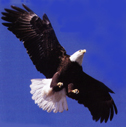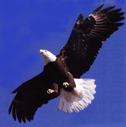|
The Soviet Franz Josef Land Overflight by Page 1 of 1 Page |
|||||
 |
 |
||||
|
Leaving the northeast coast of Greenland, some 1,000 miles of the open waters of the Arctic Ocean separated us from the Franz Josef Land Archipelago. The accuracy of the navigation from this point on, depended entirely upon the accuracy of the observations of the sun, the attention to the details of the DR plot and the navigators computation of wind direction, velocity and resulting ground speed. Now that we were over the Arctic Ocean I alerted the crew and instructed the gunners to operate the turrets and test fire the guns. The firing of the guns and the operation of the turrets without problems proved that our defensive systems were ready.
With the flight proceeding normally, we remained at our cruising altitude over a cloud deck to be able to take observations of the sun. Approximately six hours into the flight, Burkhead told the crew that according to his plot the islands were not much farther. Heiman, with his radar at long range, was beginning to see some of the islands creep in on his scope. Earl Schureman, our ECM observer, had two racks of signal acquisition equipment, as well as radio equipment. During our inbound flight to Franz Josef he was frequently advising us that his continual search for electronic or radar signals was producing nothing. A good sign for us, perhaps. Flying above a lower overcast cloud deck, it was clear that photography at our planned altitude of 20,000 feet could not be accomplished. As Schureman was not receiving any signals indicating possible Soviet activity (I must point out to the reader that at this point we hd no idea what we were getting into) I started a descent, breaking out at about 12,000 feet, where we were now flying between multiple cloud layers. The islands were fast approaching, Heiman was giving us a blow by blow, report on our approach to the Islands (The SAC weather forecast was a compete bust.) Editors Note: If you have not yet accessed the selection of maps for this story, you may wish to click here to become familiar with the crew's navigation charts and plans. You will have a quick return to this page through use of your back button or the link choices at the bottom of each Attachment page. The gunners had been on alert for some time, our photographers were ready, we were maintaining our inbound heading to the objective islands, meanwhile I was hoping to salvage something from the effort that everyone expended to get us here. The crew would not have given an abort a thought. I made a decision to give the mission our best shot. I continued the descent through thin clouds, small dots of islands, became visible below us. Finally we were under a very thin layer of scattered to occasionally thin broken clouds, where I leveled off at 3,000 to 2,500 feet. The visibility under the thin clouds was surprisingly good, perhaps 8 or more miles, and we began to see islands at some distance either side of our flight path. Continuing to hold our last heading, I reduced airspeed to about 180 mph. At that altitude and airspeed, obtaining photography with our complete camera installation was impractical. We would have to rely on the Tri-met and Oblique camera, (our 36 inch multi-camera installation could have been used on a specific observed target) for photographing anything of interest that we encountered. During our flight through and over the islands, the photographers took a series of selected photographs of some of the larger islands in the hope that the photos would show something that we overlooked or could not see with the naked eye. The photographic reconnaissance mission became mostly one of visual observation of each ice covered barren island that we overflew, or which passed on either side of the aircraft. Maintaining our heading we passed over a larger island that may or may not have been Zemlya Aleksandry. Always expecting to find what we were looking for, a Soviet base on the next island overflown, while over one of the smaller islands, to our surprise, some of the crew observed a long low brown colored structure half covered with ice or snow, which we collectively estimated to be 100 feet long and 50 feet wide. A short distance from this larger building, were two small sheds perhaps 110 feet square. We could only speculate as to the purpose of these structures. There was no evidence of recent habitation. In our flight at 2,500 to 3,000 feet altitude our course took us over numerous large and small islands. We had, at the time, no accurate knowledge of the height of the islands; over some, we were marginally over the top beneath the clouds. We did not observe anything that would indicate a Soviet presence, military or civilian activity. All was bleak ice covered desolation, with no evidence of airfields, construction sites, ships, wharves, docks or anything on the waters or straights separating the islands. During this period Earl Schureman was continually engaged in searching for electronic emissions with negative results. Heiman was following our flight and at intervals taking radar scope pictures. We had been maintaining our course for a considerable length of time, how long or far I do not recall — perhaps an hour or more. In any case, I do remember that at the end of our course, I was starting to make a left turn, when someone on the intercom said, “let's get the hell out of here”. I did not know who made the statement, but as I believed we were now out of film, and that we had accomplished all that we could do under the circumstances, and also because there were too many other islands. I had no desire to further stretch our luck as the crew had been on edge for some time. It was time to go. We were a long way from Thule. End Page 1 of 1 Page of Chapter 5 — Go to Chapter 6 You may go to Cover Page — Editor's Introduction & Prologue — Table of Contents Chapters — 1 — 2 — 3 — 4 — 5 — 6 — 7 Or, you may Home - Contact Us - Cold War Hist. - 91st SRS Hist. - Stardust 40 Mission Story |
|||||